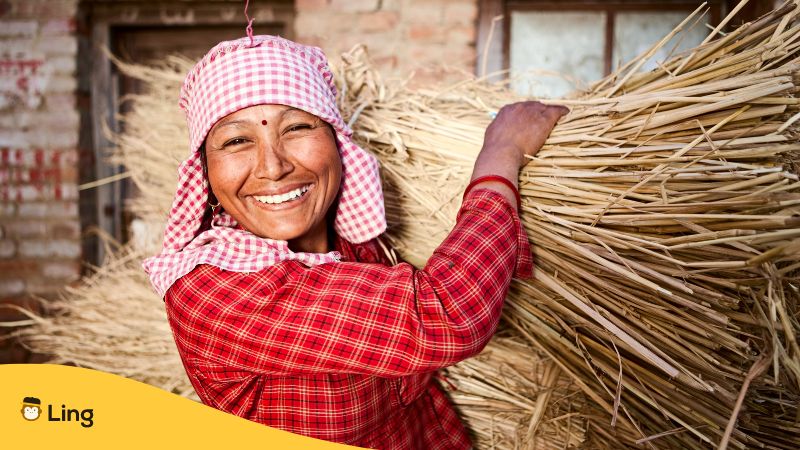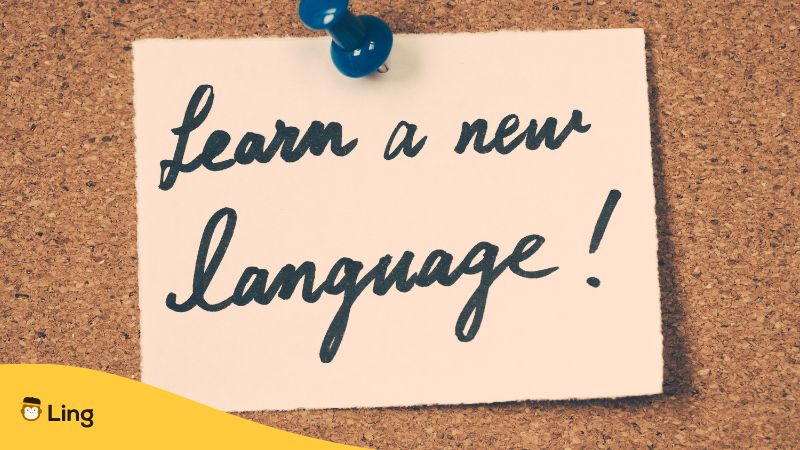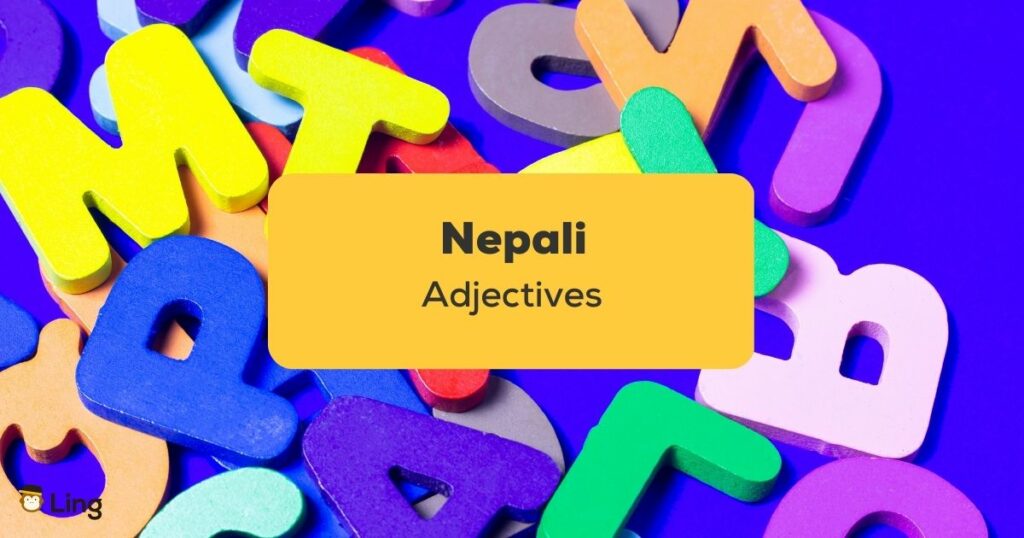विशेषण (Visesana), or Nepali adjectives, are very interesting as they do the job to enhance your sentence and make your words alive. Basically, they refer to a word or a group of words that describe something to make an expression sound more informative. According to the locals, the most used adjective in the Nepali language is राम्रो (Ramro) which means “good.” Ready to learn more about it? Let’s get started!
Let’s face it, adjectives are an essential part of language learning because they allow learners to describe and differentiate between people, places, and things. By mastering its usage, language learners like you can expand your vocabulary and develop more nuanced and descriptive language skills. For example, knowing basic adjectives like “big,” “small,” “fast,” and “slow” allows you to describe a number of things more effectively.

Mastering Nepali Adjectives
Conversations are a great opportunity to improve your language skills, particularly when it comes to using adjectives. Adding descriptive words before your nouns not only enhances the beauty of the language but also helps to convey a more precise meaning and creates a vivid mental image for the listener.
In learning a language, it is important to understand how adjectives function and how they can be used effectively. For example, when studying Nepali adjectives, it is helpful to remember some key points and refer to relevant examples for additional guidance.
- Adjective phrases are formed in the following way: Optional modifier + Adjective. For example: very greedy धेरै लोभी (Dherai lobhi).
- In adjectives phrases, as mentioned before, an adjective always starts the phrase, which is called an obligatory or compulsory head. e.g. beautiful सुन्दर (Sundara).
- The obligatory adjectives in Nepali that end with an “o” sound are related to the gender or number of the noun. The word good in Nepali is the same for great, nice, and good-looking as well which is राम्रो (Ramro). e.g. good-looking boy राम्रो केटा (Ramro keta).
- Nepali adjectives also have comparatives and superlatives similar to English. e.g. fairly big ठुलै ठुलो (Thulai thulo); faily small सानै सानो (Sanai Sano).
Types Of Adjectives
Adjectives are an essential part of speech used to describe or modify nouns and pronouns in a sentence. They simply add color, detail, and precision to the language, making it more descriptive and engaging. There are different types of adjectives used in Nepali, each serving a distinct purpose and helping to convey specific meanings.
| Adjective Type | English | Nepali | Pronunciation |
| Adverbs of quantity | More, somewhat, little, very little | धेरै, अलिकति, थोरै, धेरै थोरै | Dhērai, alikati, thōrai, dhērai thōrai |
| Comparative quantifier phrases | The night appeared more terrifying than the day | दिन भन्दा रात धेरै डरलाग्दो देखिन्थ्यो | Dina bhandā rāta dhērai ḍaralāgdō dēkhinthyō |
| Superlative quantifier phrases | This is the greatest moment of my life | यो मेरो जीवनको सबैभन्दा ठूलो क्षण हो | Yō mērō jīvanakō sabaibhandā ṭhūlō kṣaṇa hō |
| Elative superlative quantifier | The gift was the dearest thing to her in the whole world | उपहार उनको लागि सारा संसारमा सबैभन्दा प्यारो चीज थियो | Upahāra unakō lāgi sārā sansāramā sabaibhandā pyārō cīja thiyō |

List Of Nepali Adjectives To Memorize
To improve your vocabulary and fluency in a new language, it’s important to become familiar with commonly used words in everyday settings. Adjectives, in particular, are powerful tools for expressing the nuances of meaning in a language. By memorizing and practicing their usage, you can become more confident in your ability to convey your intended message accurately.
Here are some common Nepali adjectives for you to explore and add to your vocabulary.
| English | Nepali | Pronunciation |
| Deep | गहिरो | Gahiro |
| Long | लामो | Laamo |
| Short | छोटो | Choto |
| Tall | अग्लो | Aglo |
| Thick | बाक्लो | Baaklo |
| Thin | पातलो | Paatalo |
| Wide | फराकिलो | Farakilo |
| Sweet | गुलियो | Guliyo |
| Sour | अमिलो | Amilo |
| Salty | नुनिलो | Nunilo |
| Circular | गोलो | Golo |
| Straight | सोझो | Sojho |
| Square | वर्गाकार | Vargaakaar |
| Triangular | त्रिकोण | Trikon |
| Clean | सफा | Safa |
| Dark | अँध्यारो | Andhyaaro |
| Dirty | फोहोर | Fohor |
| Dry | सुख | Sukha |
| Easy | सजिलो | Sajilo |
| Empty | खालि | Khaali |
| Expensive | महगो | Mahago |
| Fast | चांडो | Chaando |
| Full | पुरा | Pura |
| Good | असल | Asal |
| Hard | गाह्रो | Gaahro |
| Cheap | सस्तो | Sasto |
| Light | हलुका | Haluka |
| New | नयाँ | Nyan |
| Old | पुरानो | Puraano |
| Correct | ठिक | Thik |
| Weak | कमजोर | Kamajor |
| Wet | भिजेको | Bhijeko |
And there we have our complete guide! It wasn’t that hard to learn this grammar point, right? At first, everything may look overwhelming, but with consistent practice, we bet you can master Nepali adjectives immediately.
As we learned in this post, a strong grasp of adjectives can greatly enhance your ability to express yourself clearly and effectively. This, in turn, can boost your confidence in the language and improve your overall communication skills. However, it’s crucial to remember that memorizing adjectives alone is insufficient to achieve language proficiency. It’s equally important to focus on grammar, syntax, and other aspects of the language to develop a comprehensive understanding.

Try Using Ling To Learn Nepali
The Ling app offers a unique language learning experience through an app, connecting you with native Nepali speakers for one-to-one conversations and pronunciation practice. The gamified approach makes learning through games fun and engaging while offering features to track your progress and improve your accent and grammar. With 60+ languages available, you can explore your interests and never have a dull moment while learning a new language.
The best part? You can try Ling for FREE and start using the in-depth lessons, gamified quizzes, and chatbot to improve your language-learning approach. Sounds pretty exciting, right? Ready to give Ling a try? Try the app today by downloading it from the Apple Store or Google Play Store now!



































































